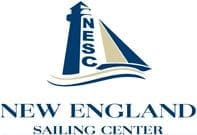Advanced Coastal Cruising is for advanced sailors looking for experience of at least 50 nautical miles upon coastal waters. Advanced Coastal Cruising challenges those students who have taken Basic Keelboat, Basic Cruising, Bareboat Cruising, Coastal Navigation or have the equivalent qualifications. Everything you learned from these courses will be used along with new skills you master through this course. Some of these skills include night time approaches to anchorages, night time man overboards, full on navigation, lights at night, standing watches and safety items one must know when sailing out of sight of land.
Please visit our course and certification information page for more information on pricing. Contact us to check course availability and to schedule your course.
Directions: Getting to Us
- Prerequisites: Basic Keelboat, Basic Cruising, Bareboat Cruising, Coastal Navigation
If certifying, students must have completed the Basic Keelboat, Basic Cruising, Bareboat Cruising and Coastal Navigation courses or have comparable training to challenge the prerequisite certifications.
The Coastal Navigation course prerequisite is offered in conjunction with this course.
- Certification: Advanced Coastal Cruising Certification
- Duration: 5 days / 4 nights course
- Course Schedule: Varies depending on course availability, instructor and conditions
Advanced Coastal Cruising graduates will have successfully demonstrated their ability to responsibly skipper and crew an inboard auxiliary powered cruising sailboat during passages on coastal waters, in all weather conditions, including all levels of visibility and all hours of the day and night.
Able to safely act as skipper and crew of a sailing vessel about 30 to 50 feet in length in coastal and inland waters, in any conditions.
Prerequisites: The prerequisites for Advanced Coastal Cruising certification are ASA 101 Basic Keelboat Sailing, ASA 103 Basic Coastal Cruising, ASA 104 Bareboat Cruising and ASA 105 Coastal Navigation certifications.
KNOWLEDGE
- Describe true and apparent wind
- Describe sailing forces using diagrams. Graphically find the center of effort and center of resistance of sails and keel, respectively
- Describe with the aid of diagrams the causes of lee and weather helm and methods of correcting them. Include the reasons for preference of slight weather helm, sail selection (including full sails or reefed sails), mast position and mast rake
- Describe sail shapes and sail interactions as needed for different wind strengths and points of sail. Describe the effects on sail shape and sail interactions
- Describe how to use a barometer and a thermometer independently and concurrently to assist in predicting weather
- Describe cirrus, cirrostratus, altocumulus, stratocumulus, cumulonimbus and cumulus clouds and the weather expected to be associated with each
- Describe local weather in relation to thermal winds and prevailing winds
- Describe three sources of weather information available in the United States
- Describe the proper selection of sails on a given boat for all weather conditions and give reasons for the selection made
- Describe appropriate heavy weather precautions and describe how they are carried out
- Describe the steps to be taken by skipper and crew for “heaving to” and “lying a-hull”
- Describe the methods for rafting at anchor and the possible risks with day and night rafting
- Describe how to prevent the dinghy/tender from riding up and bumping the vessel’s hull while anchored at night
- Describe procedures for securing a boat overnight with one anchor and stern made fast to a dock or shoreline
- Describe two methods of using a second anchor to reduce swinging
- Describe four different methods of recovering an anchor that is fouled on the bottom
- Describe when and how to use a trip line and an anchor buoy
- Describe when and how to set an anchor watch and the responsibilities of the crew on watch
- Describe how to prepare a towing bridle, pass a tow to another boat, get underway with a tow and which speeds to use, avoid fouling the propeller, avoid danger of towline parting under stress, make proper lookout arrangements during towing
- List 8 of the 16 International Distress Signals found in Rule 37 of the USCG Navigation Rules and Regulations Handbook
- Describe how the boat should be handled and what actions should be taken when emergencies occur while under sail
- Describe how the boat should be handled and what remedial action should be taken when emergencies occur
- State the fuel tank capacity and range of a typical 40-foot cruising sailboat and the factors that could affect its range
- State the water tank capacity of a typical 40-foot cruising sailboat and the minimum water requirement per person
- Describe the skipper’s responsibilities and action for common courtesies and customs
- List the documents required and the procedures followed when leaving and entering U.S. territorial waters
- Describe appropriate measures for common engine problems
- Describe when and how to carry out an oil change
- Describe the minimum pre-season inspection and maintenance
- Describe recommended permanent and temporary installation methods of grounding for lightning
- List factors to be considered before allowing anyone to go swimming while the boat is at anchor
- Describe the danger of overhead power lines
- Describe the uses, capabilities and limitations of a portable radar reflector
SKILLS
- Perform the duties of skipper and crew on a liveaboard coastal cruise of at least 48 hours, including night sailing
- As helmsman, demonstrate the proper techniques of beating, reaching, running, tacking, jibing, heading up, bearing away and luffing in approximately 20 knots of wind
- Work to weather to best advantage accounting for wind shifts, tides, current and local geography
- Sail a compass course within +/- 10 degrees with sails trimmed
- Demonstrate correct methods of towing a dinghy
- Demonstrate a person in water (Man Overboard or MOB) recovery maneuver while sailing at night
- Anchor, weigh anchor, pick up and cast off moorings while acting as helmsman and/or crew
- Demonstrate how to take a sounding using two different methods
- Stand a navigation watch during a passage of at least 20 miles by night and 20 miles by day and demonstrate all of the skills elements in ASA 105, Coastal Navigation
- (Optional) Demonstrate correct procedures for hoisting, setting, trimming, jibing, dousing and packing a spinnaker



